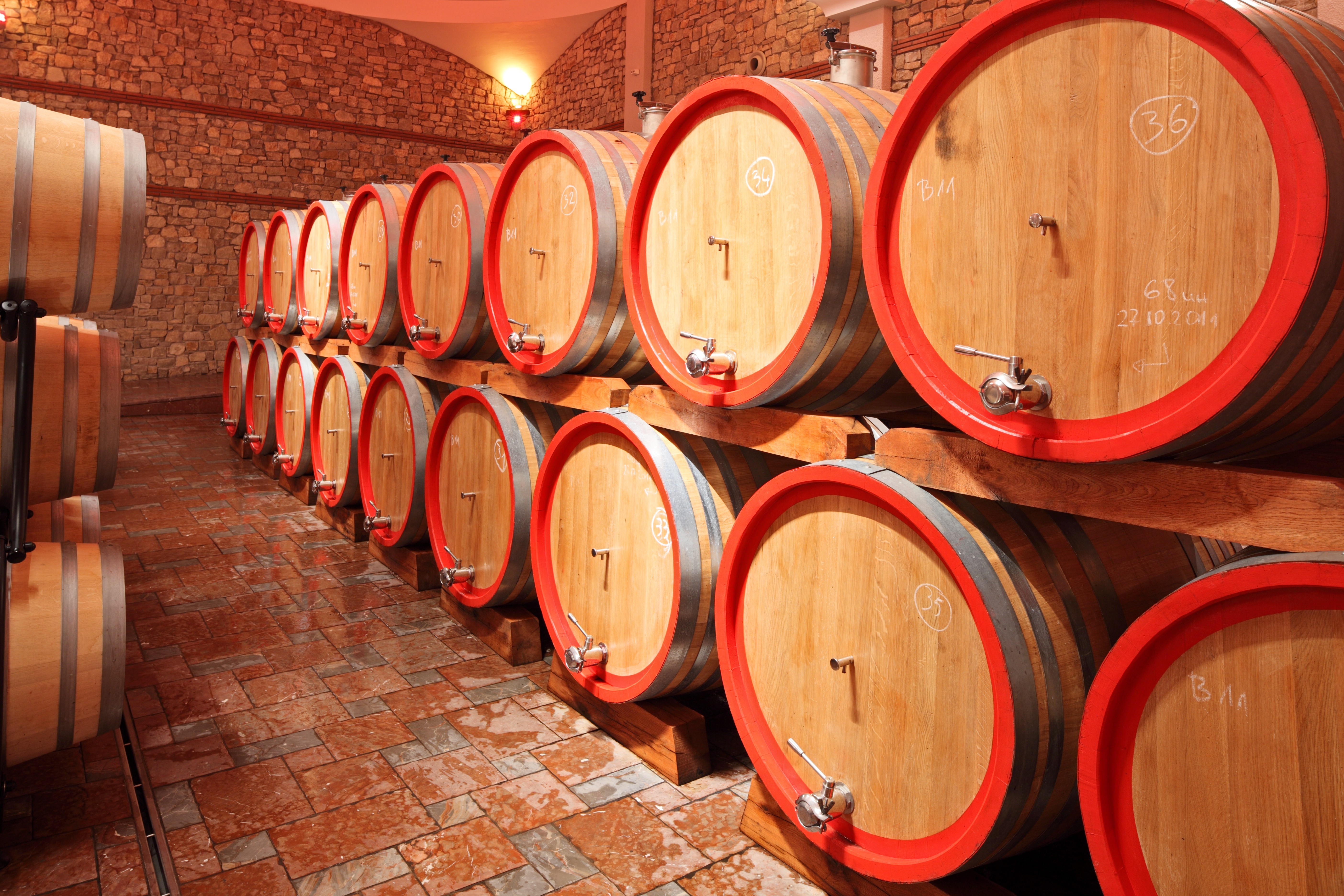Oak and Winemaking - a Bit of Chemistry
Posted on Mon 13th Jul 2015 at 14:19

In the wine trade, questions about oak use are routine. “New or old? French or American? Size of barrel and how long?” It all sounds quite simple in principle but in practice the scientific understanding of how oak influences wine rather lags behind the understanding of the grape vine itself. In part, I suspect this is due to the long timescales involved in growing oak trees, which are often well over 150 years old by the time they are felled to make into barrels.The principle constituents of oak wood are as follow
The principle constituents of oak wood are as follows: Cellulose 45 to 50% Hemicellulose 20- 25% Lignin 25 to 35% Tannins 5-10% Cellulose is the structural part and doesn’t change much during barrel making. Hemicellulose acts as a binding agent in the wood itself, and is mostly made up of small sugars such as xylose and arabinose. Not only can these sugars be hydrolysed when in contact with wine, but they decompose when heated – forming compounds (like furfural, maltol and ethoxylactone), which can give roasted, malty and caramel notes. The Lignin also breaks down during both seasoning of the raw planks and as a result of heat during the cooperage process. Some of the key breakdown products of Lignin and the flavours they give are:
Compound Vanillin Guaiacol 4-ethylguaiacol eugenol
Flavour vanilla smoky, roast coffee floral, smoky, spicy medicinal cloves, spice
And of course there are lots more. Another group of compounds found in oak in small amounts are the lactones. These have important sensory characters – giving pleasant oaky notes at low levels but giving coconut characters and even resin notes at higher levels. Toasting the oak increases levels of these compounds too. Tannins from oak are chemically different to those from grapes themselves, particularly two compounds called ellagic acid and gallic acid. Both the origin of the oak tree and its species have an influence on the flavour profile. There are three species of oak used in winemaking: Quercus alba, the American oak, Quercus sessilis (aka Quercus petraea), the French oak of eastern France and central Europe, and Quercus robur, the oak of western France, also known as the English oak. This last is also the species that predominates in the forests of inland Croatia (the Slavonia region) and also is reported to be the species used for barrels in Macedonia. Quercus sessilis is very much regarded as the finest species for top quality barrels, usually sourced from the forests of Western France, but also increasingly from Hungary and even Russia. This wood has the tightest grain and it has higher levels of extractable aromatic compounds such as eugenol, lactones and vanillin and a lower concentration of oak tannins than Quercus robur. In comparison, Quercus alba has even higher levels of lactones and is often associated with a noticeable coconut character in wine. There is a logical rationale for attempting to use local oak to enhance a sense of place in winemaking. However, I would prefer to see the place expressed by the fruit rather than being encumbered by dominant oak flavours. So far, from what I’ve tasted, Macedonian oak hasn’t shown the quality required – it gives a marked floral character and emphasizes dry tannins, though whether this is entirely due to the oak species, the growing conditions in the forests, or whether it's the quality of cooperage at issue has not yet been resolved. Unpublished research suggests high levels of cis and trans lactones and that Macedonian oak is very sappy, requiring very long seasoning. In contrast, Slavonian oak serves a different purpose, usually coopered using thick staves into big wooden casks or vats that may be used for many years. Here there is a need for fairly neutral oak flavours but some gentle micro-scale oxidation to help round out mouthfeel, soften the tannins and fix colour. Other factors to consider in barrel making are maturation of staves in the open air to reduce greenness and astringency – a minimum of 24 months is required for decent results and a full 36 months seems to give less okay, toasty character – i.e. more subtlety, though at a cost of course. And in cost terms, the species of wood matters too. American oak has more tyloses in it – little plugs that stop the oak being porous as the heartwood forms. When it comes to making barrels, coopers can saw American oak up and it will still be liquid proof, whereas Quercus sessilis must be split carefully along the grain to avoid leaks. American wood gives as much as 40% more useable material, making these barrels much cheaper. And of course nowadays the big coopers offer a range of barrels in different sizes, with different (and carefully controlled) levels of toast to be matched to the wine style. Using oak barrels is actually an expensive investment so only the best wines tend to get this treatment. Top quality French oak may be over €800 per barrel (and typically a barrel holds 225 litres, making just 300 bottles of wine). Assuming a barrel gets used for 3 years, this is around 1 euro per bottle just for the oak, never mind the cost of a special barrel cellar and all the extra handling. Not surprisingly, several alternatives have been invented but more about these another time. Written by Caroline Gilby; Master of Wine, for Signature Wines Ltd.

